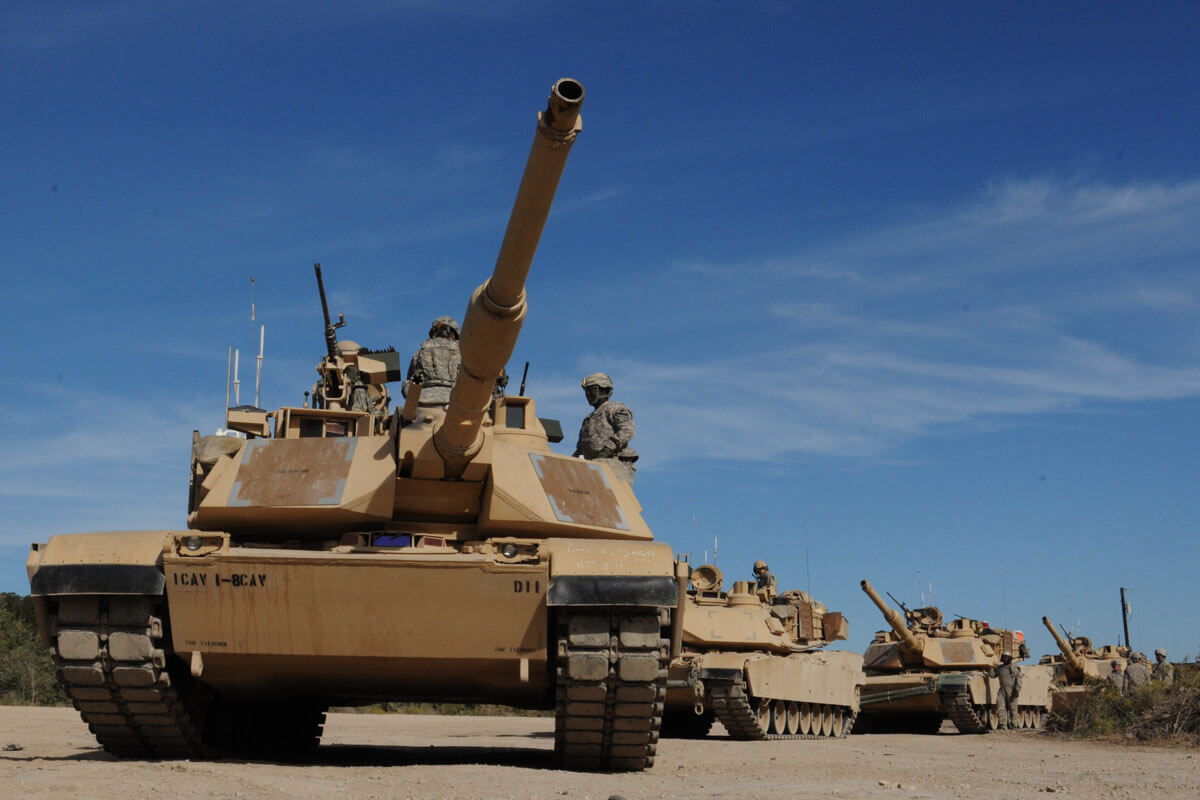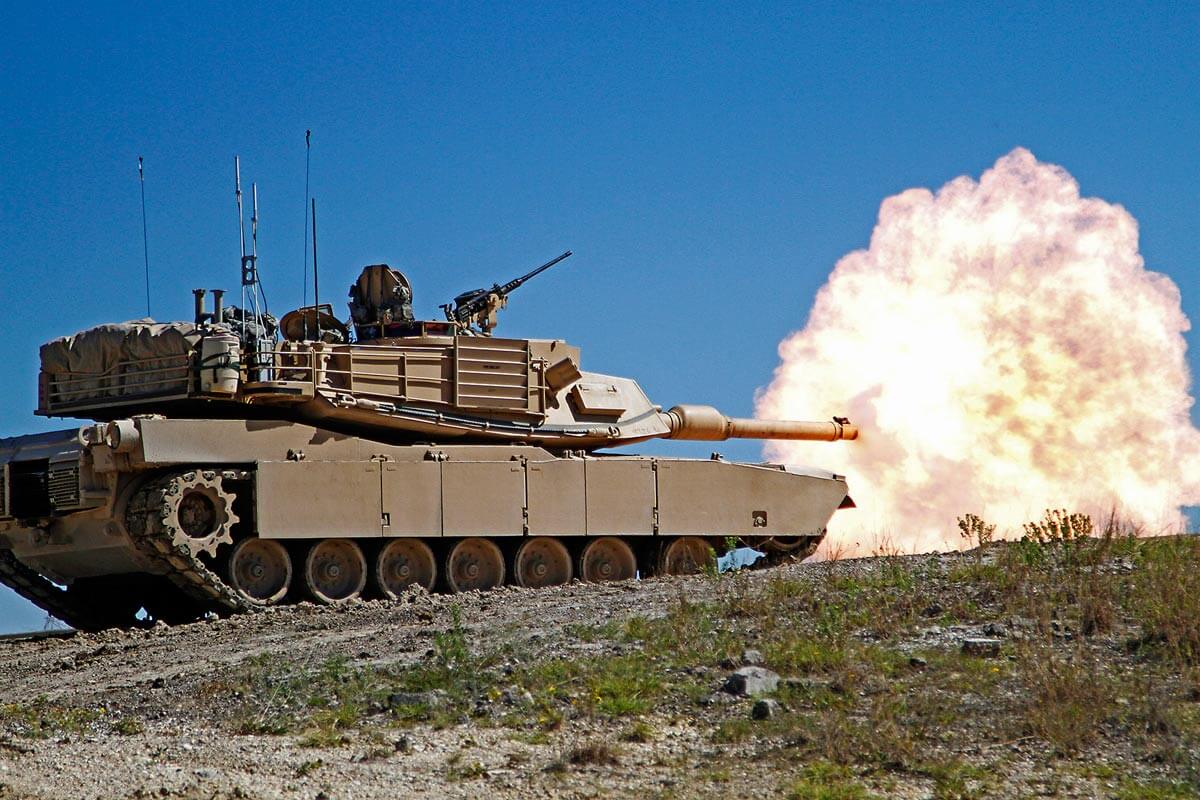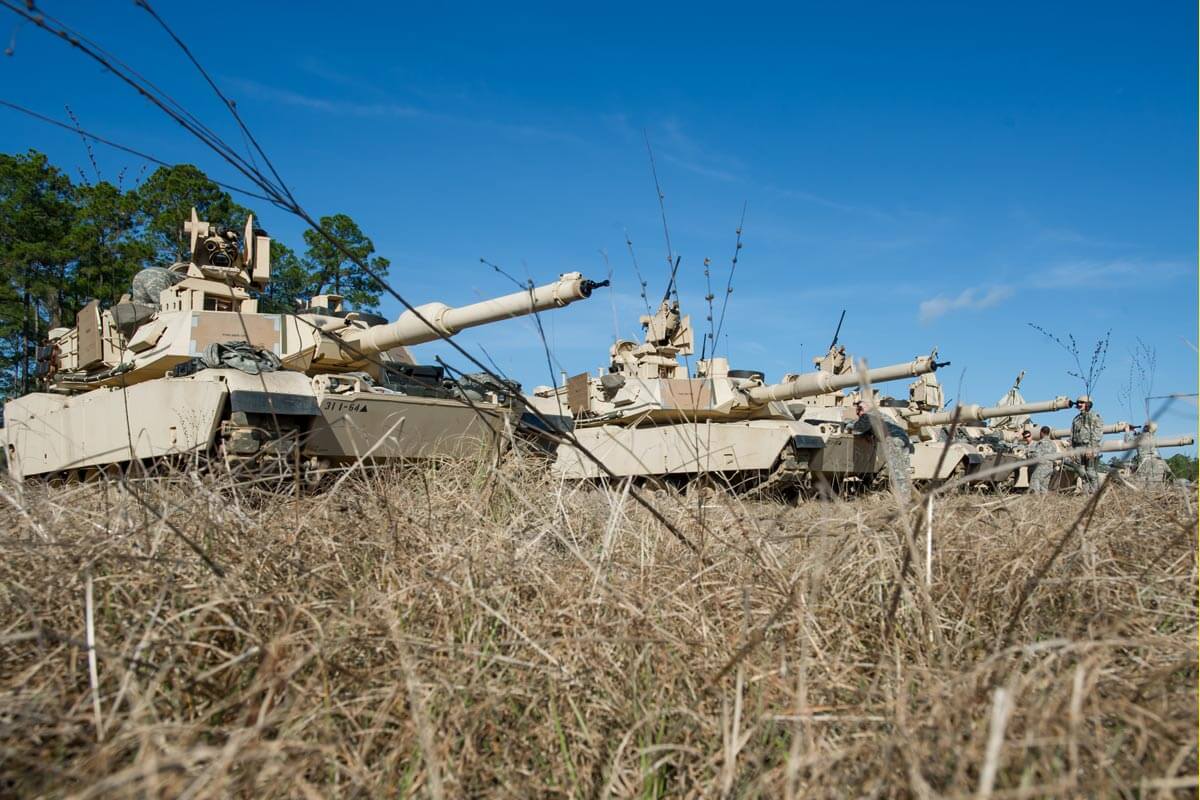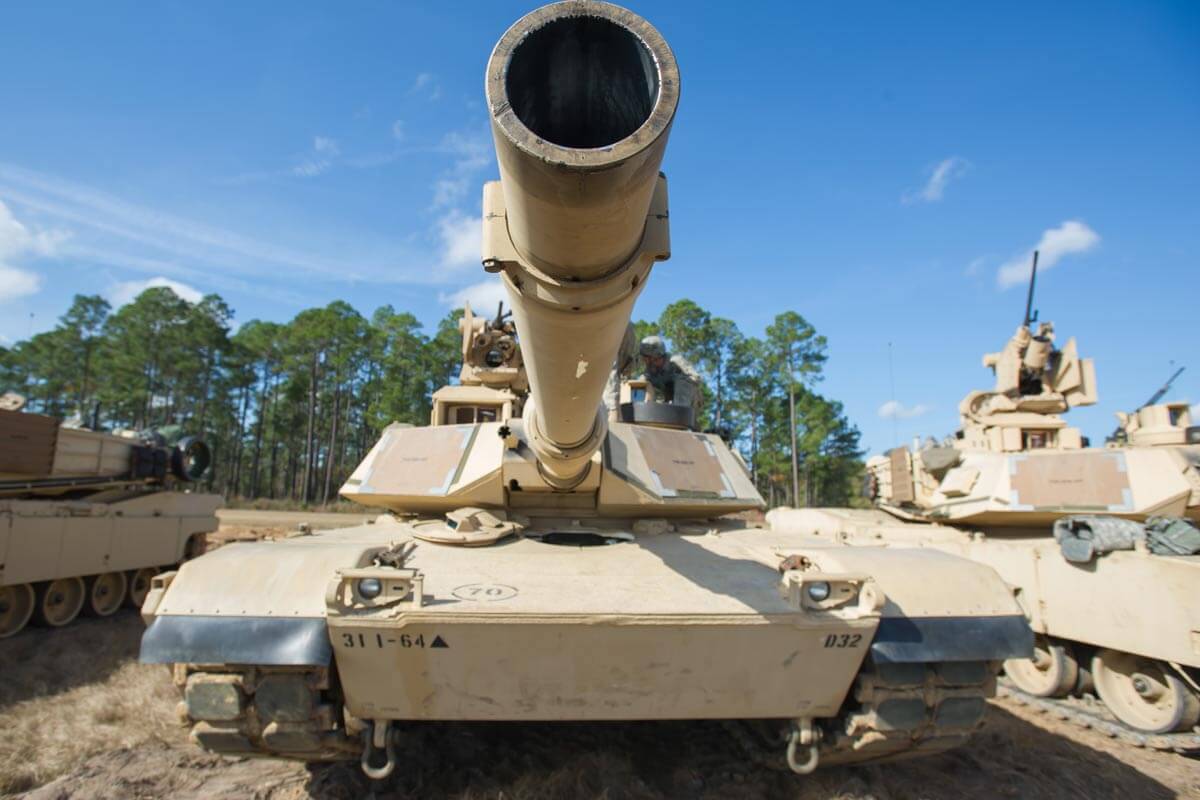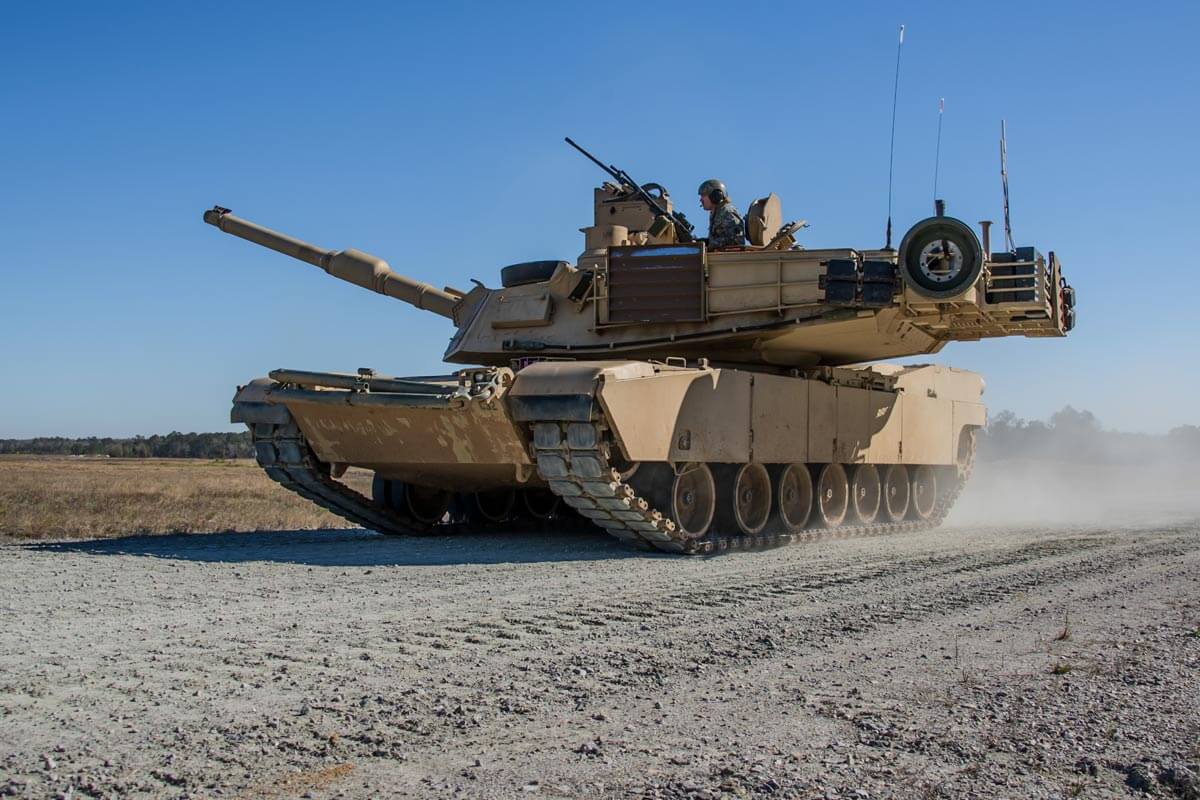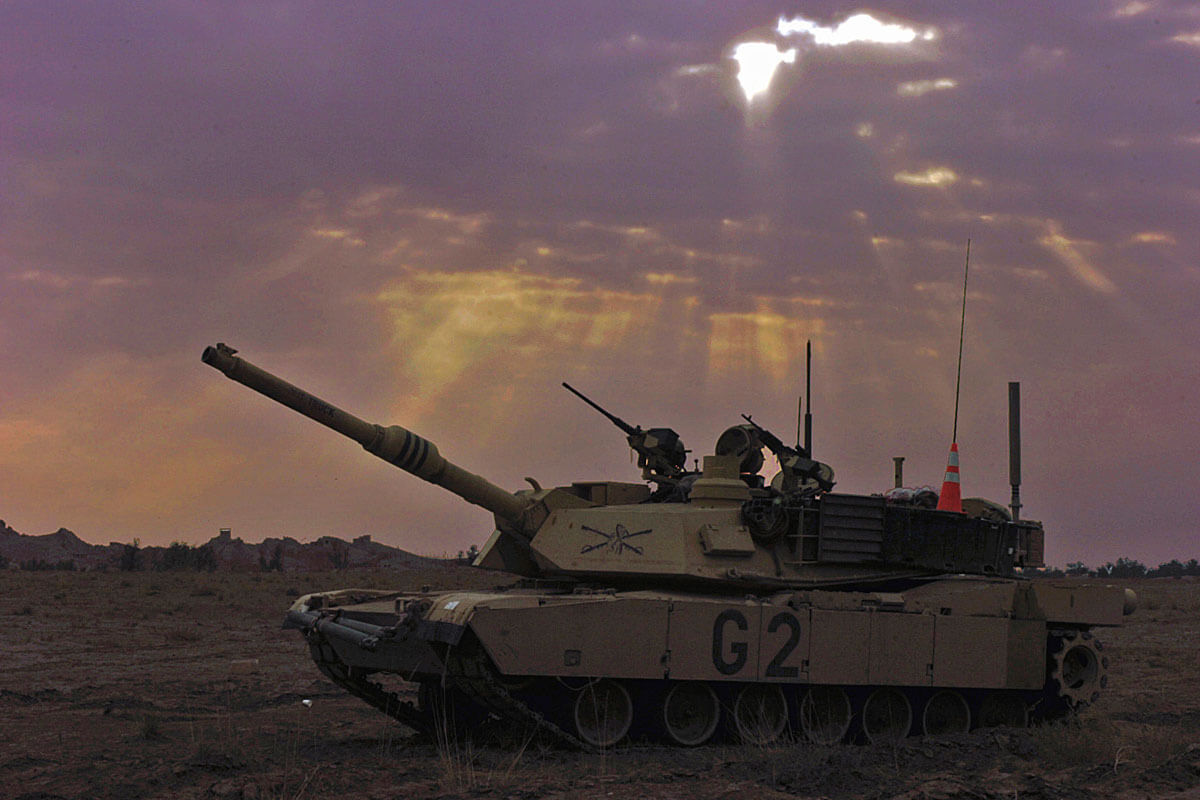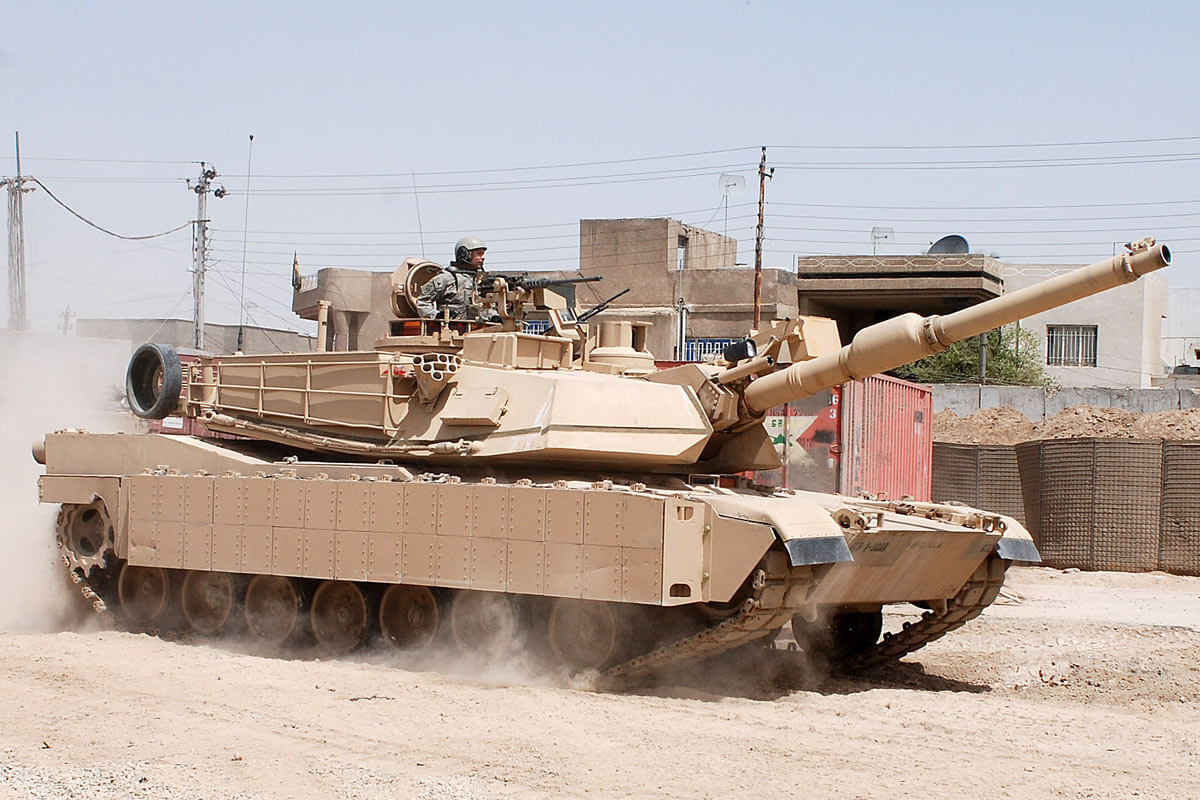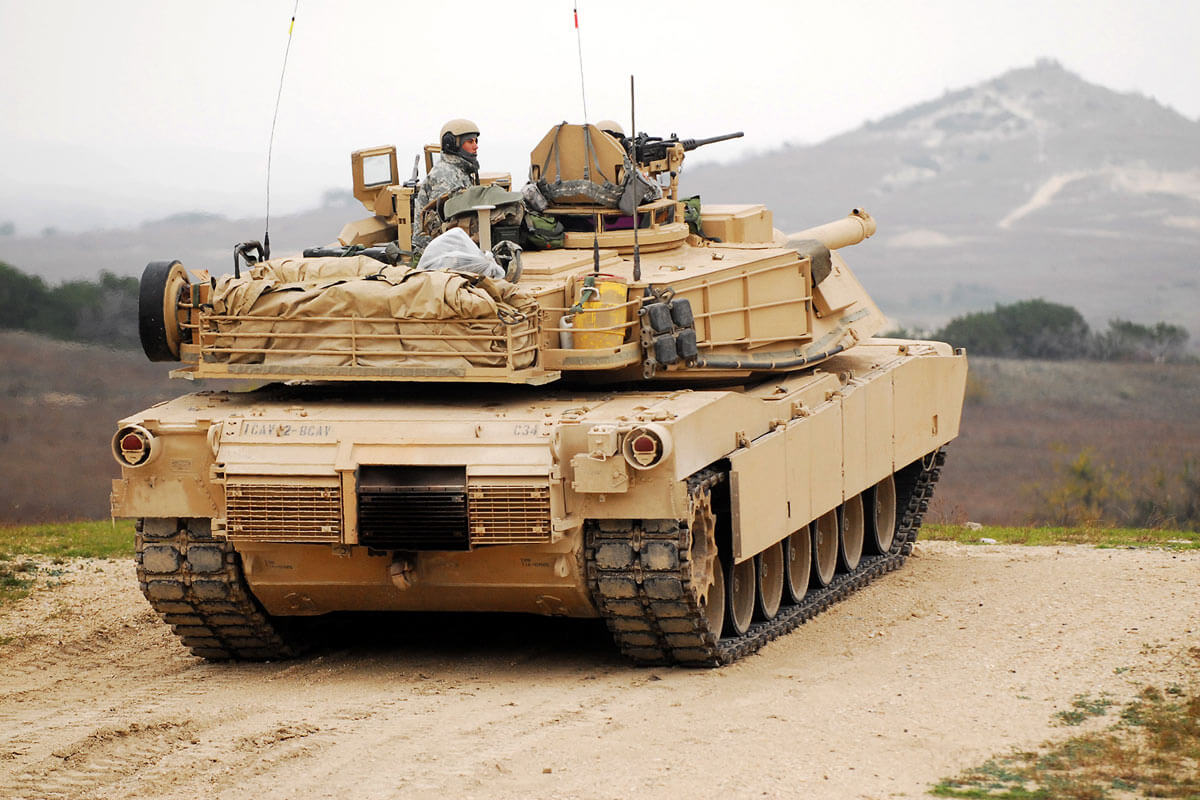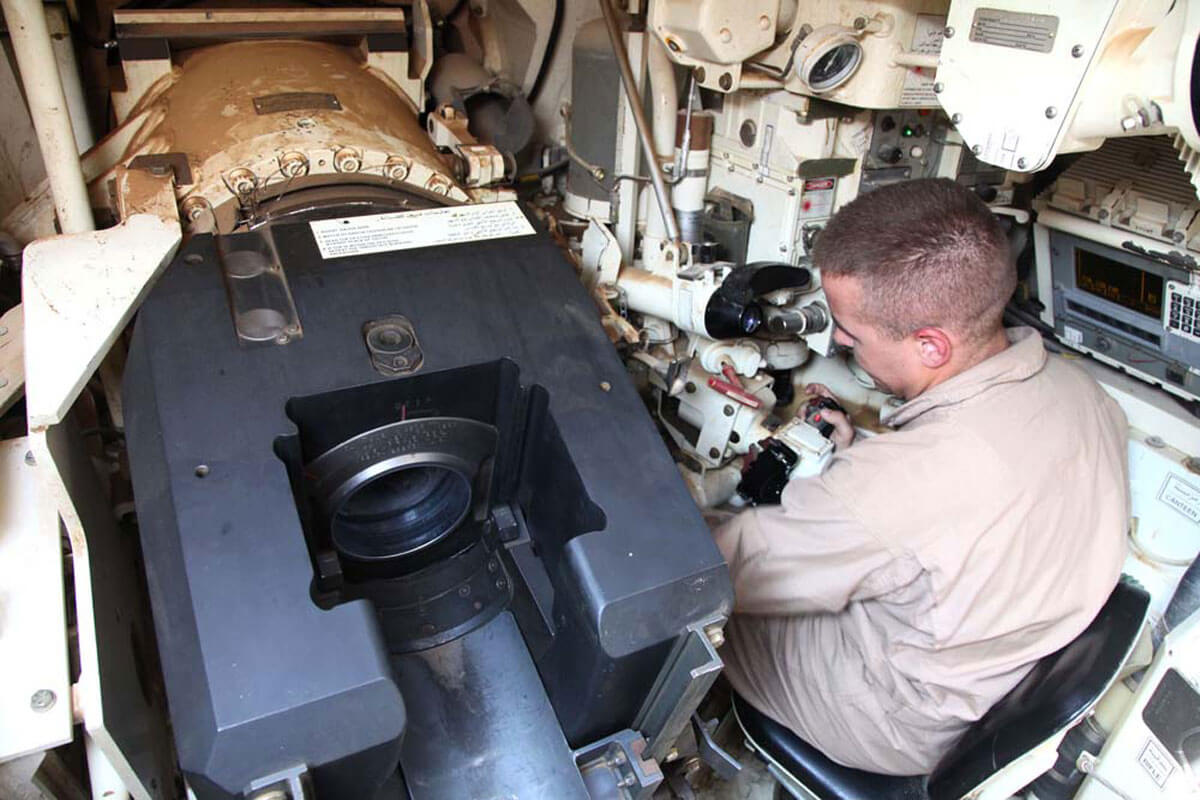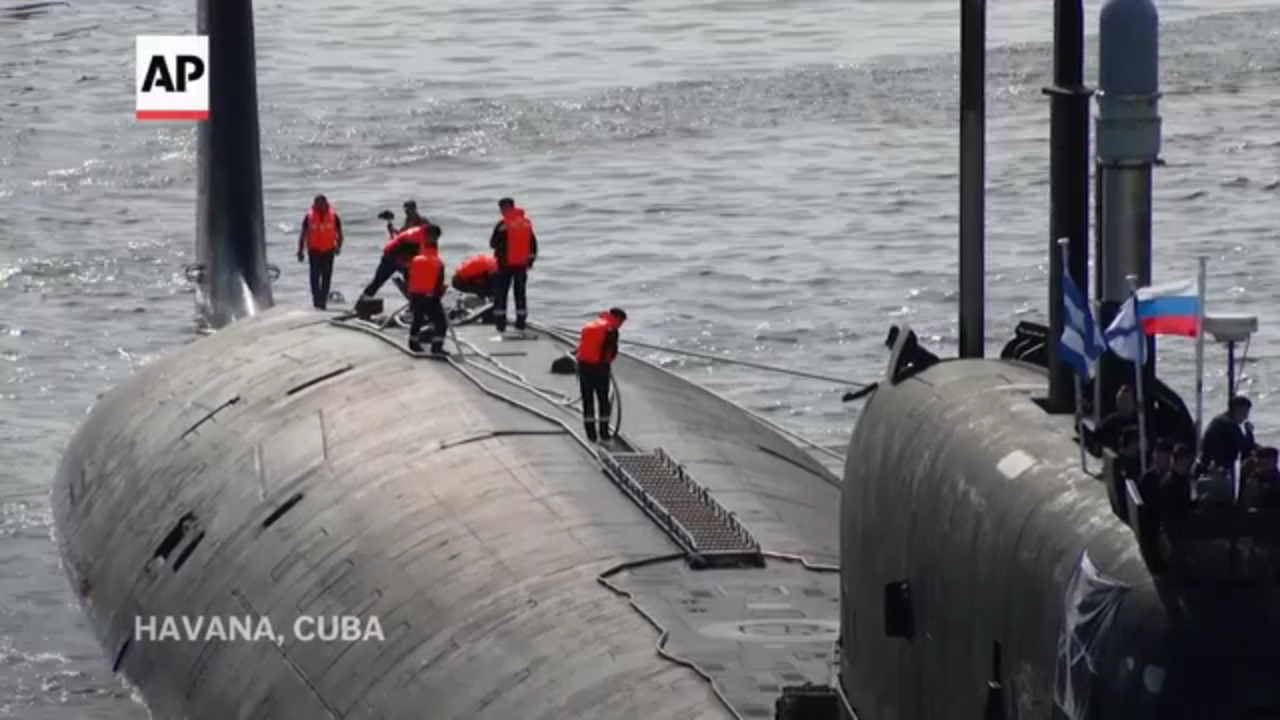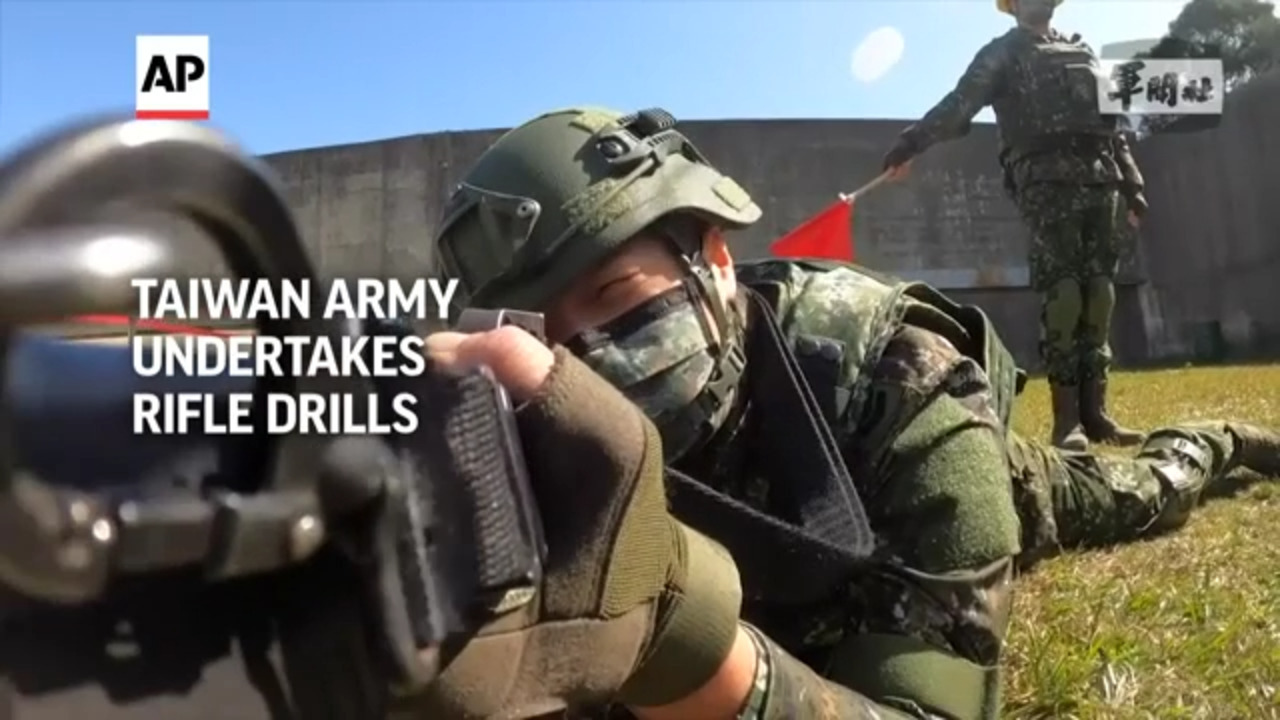The M1A2 Abrams is a formidable main battle tank used by the U.S. Army. Weighing around 68 tons, it features advanced armor, firepower and mobility. Its primary armament includes a 120mm Smooth Bore gun capable of firing various types of ammunition, enhancing its effectiveness against armored targets.
With a crew of four, it incorporates advanced technologies such as thermal imaging, computerized fire control systems, and reactive armor for increased survivability on the battlefield.
Approved for production in 1990, the M1A2 represents the U.S. Army’s technological improvement of the basic M1A1 design and the most modern battle tank in the world. Outwardly similar in appearance to the M1A1, the most notable exterior changes on the M1A2 are the redesigned Commander's Weapon Station (CWS) and the addition of a Commander's Independent Thermal Viewer) on the left side of the turret forward of the loader's hatch. Internally, however, the M1A2 has been radically redesigned to take advantage of newer technology.
Most notable of these improvements is the addition of the Inter-Vehicle Information System (IVIS.) The IVIS system allows for the automatic and continual exchange of information between vehicles. By incorporating information provided by an on board Position/Navigation (POSNAV) system, unit commander's can track the location and progress of subordinate elements automatically, without tasking vehicle crews. In addition enemy positions can be identified, plotted and disseminated, while reports and artillery requests can be automatically formatted, transmitted, and processed. Lastly, map graphic control measures and operational orders can be rapidly distributed via the IVIS system.
To ensure information security, all IVIS data transmissions are routed through the M1A2's SINCGARS radio system. Improving on the "hunter-killer" tank commander-gunner target hand off method pioneered on the German Leopard II, the M1A2 takes this a step further by providing the Tank Commander with an independent thermal sight. This CITV sight allows the commander to independently scan for targets in all weather conditions and through battlefield obscurants. In addition to IVIS and the CITV, the M1A2 incorporates a number of additional electronic upgrades. Power distribution throughout the tank has been improved, relying on multiple bus paths so that in the event one conduit is damaged, power may still be delivered to a component via an alternate path. The driver's instrument display has been upgraded to a more detailed digital display and the Gunner's Primary Sight has been stabilized in two axes for increased accuracy.
Approved for implementation in 1995, the M1A2 SEP (System Enhancement Package) is a technology upgrade and standardization program, whereby the Army's fleet of M1s and M1A2s will all be brought to a common standard. Most notable among the modifications will be the introduction of a standard under armor auxiliary power unit and the addition a crew compartment air conditioning and cooling unit.
Other modifications within the vehicle will include upgrades to the IVIS system (color display, full size keyboard, digital mapping and graphics generation capability, and voice recognition capabilities), upgrades to the Gunner's Primary Sight assembly, and improvement in the tank's intercom and radio communications systems. Production of the M1A2 was halted after the initial run of 627 vehicles. As part of the fleet upgrade program, 547 of the Army's current inventory of M1s are being upgraded to M1A2 SEP standards, which will require the complete remanufacturing of the turret, while the current fleet of M1A2s will undergo a retrofit to bring them up to SEP standards.
